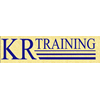Handgun Beyond Basics
Intermediate - Improve the general shooting skills of intermediate level pistol shooters
Duration: 4 Hours
$125.00
Fee
| Date | Availability | ||||
|---|---|---|---|---|---|
| Register Now | May 31 Saturday |
LINCOLN, TX
|
3 - 9 Students | 1p-4p | Karl Rehn |
Description
The goal of this course is to improve the general shooting skills of intermediate level pistol shooters.
This course is part of the core curriculum of the 40 hour Defensive Pistol Skills Program.
Topics: reducing perceived recoil, improving on the basic grip and stance, and increasing accuracy and speed on single and multiple targets. Additional information about local pistol competitions and gun clubs will be provided. Grip and stance techniques taught are based on the modified Isoceles platform popularized by world champion IPSC competitors but now in widespread use by pistol competitors in many sports, as well as law enforcement (SWAT) and elite military units.

Expectations and Outcomes
Additional information:
We are frequently asked "what are the differences between your Defensive Pistol Skills and Beyond the Basics classes?"
Defensive Pistol Skills is all about 0-5 yard shooting and drawing from concealment - teaching specific skills that you'd use to survive a close range gunfight. In that course we don't fix any problems with grip and stance - there's not time alloted in the course for it. Students shoot multiple targets but they are at the same distance.
In Beyond the Basics the focus is on 5-15 yard shooting and teaching students to understand that it's possible to get hits at close range with a less than perfect sight picture. There's a spectrum of sight pictures (Brian Enos' book has a great definition of them) from Type 1 (point shooting) to Type 2 (flash sight picture, threat focused shooting, many other names for this) to traditional sight picture (Type 3) and beyond. Once students understand Types 1/2/3, then the next step is learn how to transition between those and "see what you need to see" for a given target, so in BTB we work on shooting multiple targets at mixed ranges in the 5-15 yard zone, so students get out of the "use the same sight picture for every target" mindset.
Type 3 is 7-15 yard shooting (roughly) and corresponds to the traditional sight picture most shooters use for every shot regardless of target size or distance. It's too slow for up close and personal and too coarse to get good hits beyond 15 yards.
Type 4 and 5 shooting is covered in the AT-6 class.
The other skill that goes along with this is learning the timing of your gun as it recoils, so you can manipulate the trigger as the gun comes out of recoil or comes to the next target, instead of waiting to see the ideal sight picture to apply any trigger pressure. Most shooters take their finger completely off the trigger after every shot, which isn't necessary if you know that you are going to shoot a follow up shot at the same or a nearby target.
We also fix a lot of problems with support hand grip. Most untrained shooters have an ineffective support hand grip. The support hand, when used properly, is what does a lot of the work keeping the gun stable and reducing muzzle flip. It's not really possible to learn to shoot good hits at faster than CHL-shooting-test pace without fixing the support hand grip.

Types
Intermediate

Requirements
Prerequisites: previous handgun shooting experience, Basic Pistol or equivalent preferred
Required Equipment: a handgun and 150 rounds of ammunition, a belt holster, eye and ear protection. Two or more speedloaders or spare magazines (bring more if you have them). Single-shot handguns in rifle calibers and handguns in .44 magnum or larger calibers cannot be used for this course. We have loaner holsters, magazines and speedloaders available for many makes and models. These are available at no charge but arrangements must be made prior to class day.
Optional Equipment: See the general policies page for suggestions on food, drink, clothing, etc.

